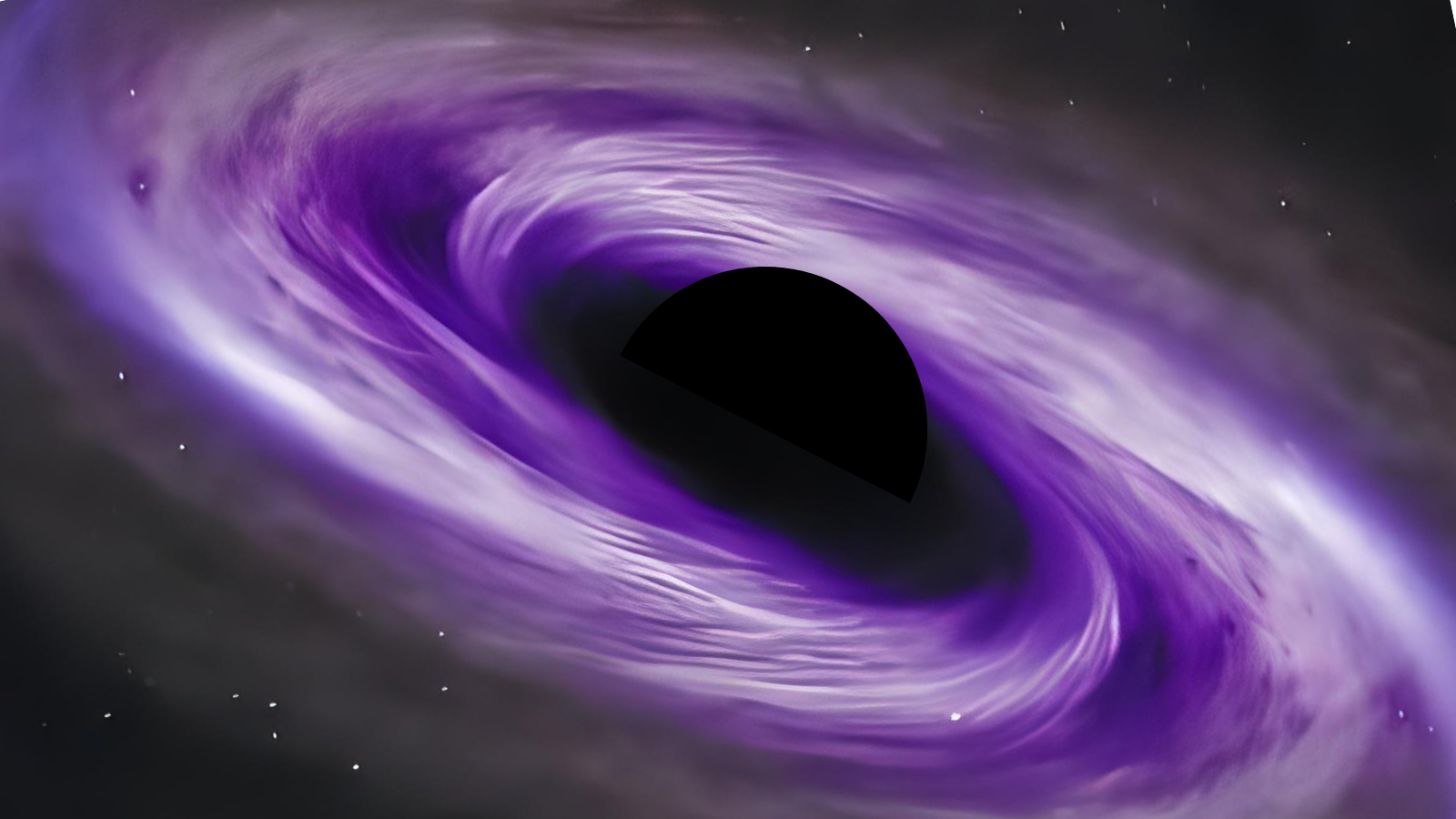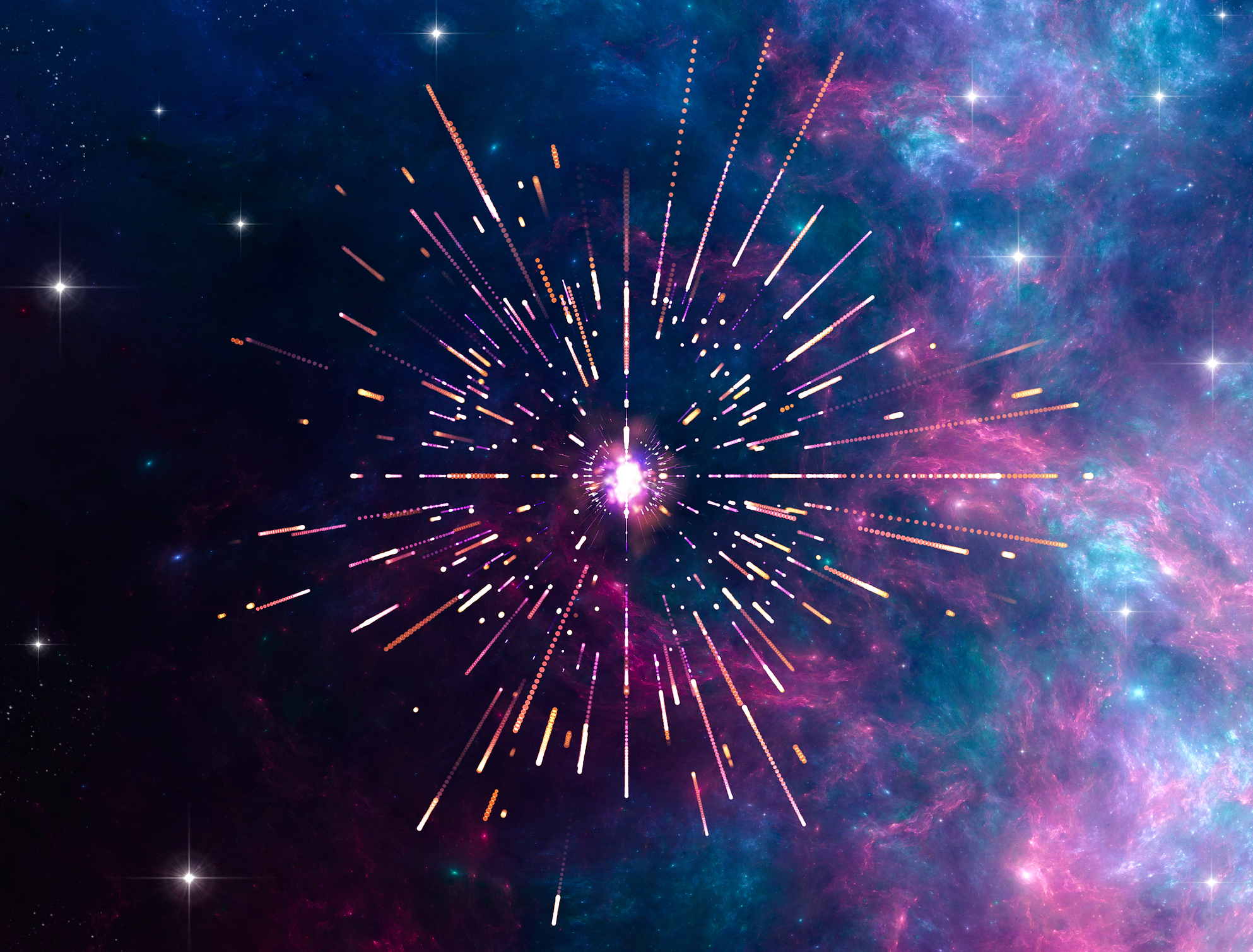Black holes that transform matter into dark energy could solve 'cosmic hiccups' mystery
'This is so cool!'

In a new study, scientists began pondering a pretty wild question: What if black holes can convert dead star matter into dark energy, the mystery force driving the acceleration of the expansion of the universe? If so, then it just might explain a multitude of "hiccups" in our models of the universe.
This new theory proposes that black holes could actually be tiny "bubbles" of dark energy. This involves the conversion of matter into dark energy because black holes are born when massive stars collapse after exhausting their fuel for nuclear fusion. Thus, if this "cosmologically coupled black hole (CCBH)" hypothesis is correct, the transformation of a massive stellar core to a black hole represents the conversion of stellar matter to dark energy.
The team behind this suggestion was inspired by recent results emerging from Dark Energy Spectroscopic Instrument (DESI) that suggest the strength of dark energy, which accounts for around 68% of the universe's matter and energy budget, is changing over time. This contradicts our current best model of the universe, the standard model of cosmology, or the Lambda Cold Dark Matter (LCDM) model, which suggests that the strength of dark energy should be constant.
"Historically, this is the way physics is done. You come up with as many ideas as you can and you shoot them down as fast as you can," DESI researcher and Boston University researcher Steve Ahlen said in a statement. "You don't shy away from ideas that are new and different, which is clearly what we need to come up with these days when there are so many mysteries."
Ahlen was an early contributor to the development of CCBH, first put forward 5 years ago by Arizona State University scientist Kevin Croker and University of Hawaii professor Duncan Farrah. Since then, many researchers have played with the mathematically robust but very unorthodox idea of black holes as droplets of dark energy.
How cosmologically coupled black holes hooked up with DESI
The team's idea connects the accelerated expansion of the universe to DESI's observations of galaxies stretching back 10 billion years, which seem to indicate there is less matter in the cosmic matter energy budget today than there was during the Big Bang. That's because matter, via its gravitational influence, slows down cosmic expansion, while dark energy speeds it up.
Thus, the consumption of matter in the conversion to dark energy bubbles in the form of black holes in the CCBH hypothesis would explain why the rate at which the universe expands, called the Hubble constant, is changing with time.
Breaking space news, the latest updates on rocket launches, skywatching events and more!
Though dark energy dominates the universe today, that wasn't always the case. Something caused it to overthrow the influence of matter and gravity around 9 billion to 10 billion years after the Big Bang. The CCBH hypothesis suggests that dark energy didn't have some arbitrary strength at different periods of cosmic history, but instead emerged after the universe had expanded and cooled enough to allow stars to be born and later die. That would mean the amount of dark energy and its influence at any point in time should correlate with the number of stars being born.

It was the fact that the DESI's changing observations of dark energy over time do indeed seem to correspond to rates of star formation observed by the Hubble Space Telescope and the James Webb Space Telescope (JWST) that persuaded Croker and Farrah to team up with DESI.
"The CCBH hypothesis quantifiably links phenomena you would not initially expect to be related," Farrah said. "It is the mixing of scales, large and small, that runs so counter to our trained linear intuition."
Among the seemingly unrelated hiccups that this hypothesis could cure is the question surrounding the mass of so-called "ghost particles" or neutrinos.
Cosmic ghost-busting
Neutrinos are chargeless and virtually massless, meaning 100 trillion of them can pass through your body every second at near-light speeds, and you don't notice a thing. Hence their spooky nickname.
Neutrinos are the second most abundant particles in the universe after photons (particles of light), and scientists know they must have non-zero masses, but calculating these masses has been challenging. Not only is that because neutrinos are, as you may imagine, incredibly hard to detect, but it is also at least partly because matter should come in three types: dark matter, baryons (like protons and neutrons), and neutrinos; yet, some models of the Big Bang and the evolution of the universe don't leave neutrinos room to make much of a contribution to the matter-energy budget.
Some current estimates tackle this by putting the neutrino's mass as non-zero but with a negative value, something that is very troubling to physicists, as negative mass isn't something currently thought to be possible.

"The data would suggest that the neutrino mass is negative and that, of course, is likely unphysical," team member and Regents' Professor at Arizona State University's School of Earth and Space Exploration Rogier Windhorst said in the statement.
However, factoring in the consumption of baryons in the form of dead star matter and their conversion to dark energy in the CCBH hypothesis eliminates this non-physical mass headache. That's because baryons would have disappeared since the Big Bang, as they are converted to dark energy droplets, thus allowing neutrinos to make a contribution in line with measurements of their abundance.
"You find that the neutrino mass probability distribution points to not only a positive number, but a number that's entirely in line with ground-based experiments," Windhorst added. "I find this very exciting."
While this concept certainly is another step toward establishing CCBH as a viable theory, much more data, analysis, and, of course, scrutiny by the scientific community will be needed before anyone can attempt to hail CCBH as a valid new paradigm of cosmology.
Ahlen pointed out, this is, of course, the way science works. In the meantime, DESI collaborators can celebrate the fact that this research proves their data allows for the testing of somewhat "out there" hypotheses.
"It's intriguing at the very least," research team member and DESI collaboration scientist Gregory Tarlé, who led the creation of DESI's 5,000 robotic eyes, said. "I'd say compelling would be a more accurate word, but we really try to reserve that in our field.
"This is so cool, to be at this point after working on an experiment for so long, to be coming up with exciting results. It's just wonderful."
The team's research was published on Thursday (Aug. 21) in the journal Physical Review Letters.

Robert Lea is a science journalist in the U.K. whose articles have been published in Physics World, New Scientist, Astronomy Magazine, All About Space, Newsweek and ZME Science. He also writes about science communication for Elsevier and the European Journal of Physics. Rob holds a bachelor of science degree in physics and astronomy from the U.K.’s Open University. Follow him on Twitter @sciencef1rst.
You must confirm your public display name before commenting
Please logout and then login again, you will then be prompted to enter your display name.
